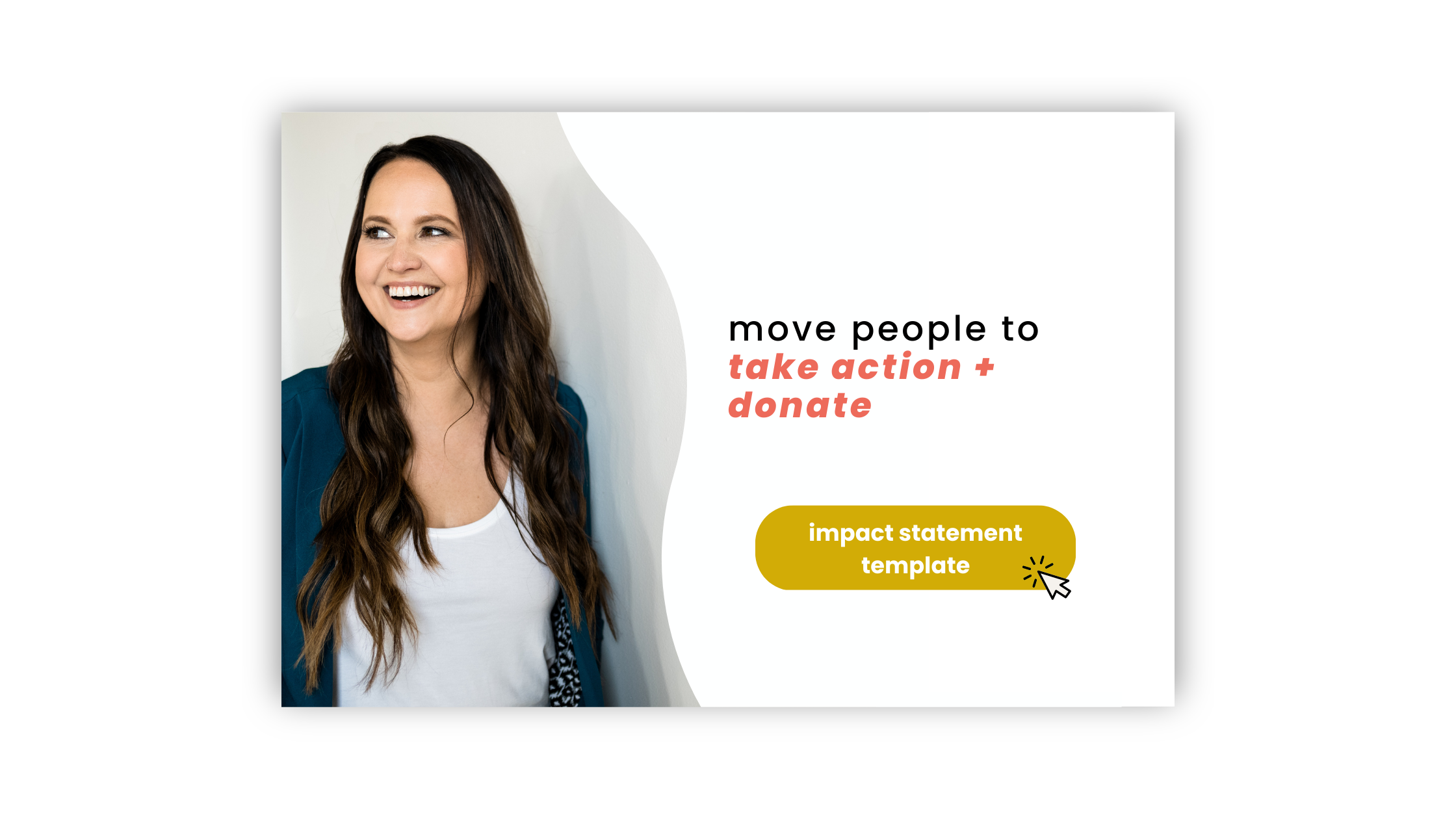4 things successful executive directors have in common
“How can I sit at the grown-up table?”
Every time I went to a networking event as a new ED, I felt like everyone around me was talking about how great they were. I thought I’d never measure up to them.
You see, I was working my butt off as a small shop ED. But at networking events, I felt like I was the little kid people would pat on the top of their head. It was crushing my confidence. I felt like I didn’t belong.
It took me years to realize that I was paving my own path and that I wasn’t the only one making it up as I went along.
Here’s the secret: Even the EDs you look up to don’t have it all together. (Correction: no one has it all together).
And guess what? You don’t become an executive director and suddenly wake up perfect. Even the most inspiring, go-getter nonprofit leaders aren’t perfect. Instead: they let themselves learn and grow through their challenges.
Here are the four things all successful executive directors have in common:
How to become a successful executive director
1. Narrow fundraising message
Most organizations are doing multiple amazing services for those they serve, and when you tell your donor about all of them, they become overwhelmed. Too many things going on and your ask soon becomes confusing or diluted.
So what does having a narrow fundraising message look like?
It’s creating an offer that includes these three major things:
Human-sized, meaning one dog, one meal, one child. Something more manageable than curing the world of COVID or disease.
Under $50. Turns out, when donors are prompted with specific amounts, they give more on average. You want your offer to be attainable, whether you’re asking online or in person. This might look something like $10 feeds a family of 4. Or $25 provides a night of safety to a dog on the streets.
Urgent. You have to convey that this is a problem that is not going away and there will be consequences if the problem is not solved.
The goal is to learn how to create a single offer that the donor can easily understand and solve. With the right problem that is easy to understand and solve, you’re going to raise more money.
2. Show up consistently
Did you know online giving grew by 12.1% this year?
Every single day, successful executive directors build trust with their supporters by showing up online consistently. They have a plan and a system in place to show up and share powerful stories about the problems they are facing (and how donors can be the solution).
When it comes to showing up, your organization will benefit most from using a combination of channels —social media, email, website, and blog— to get your story out into the community.
Let’s talk about what this means for you:
Start by determining how often you can consistently show up.
Is that one time a week?
Four times a week?
Every other day?
Next, create content that inspires, educates, or entertains your audience. Michele Hickey at Constant Contact recommends: “Think about what content you can provide that will bring value to your target audiences. What will grab their attention, and keep them coming back for more?”
But before you open Instagram for yet another round inspiration: Open a Google Doc:
Write your ideas for the month
Write everything at once instead of breaking it up throughout the week
Keep everything in one place so you can reuse material
Bonus: writing all at once means your stories and content will feel more cohesive because you’re writing multiple at one time. PLUS, this will prevent you from going down the scrolling rabbit hole.
3. Set up systems and automation
What’s the best thing you can spend your time on as an executive director? (Certainly not emails...or writing a new social media post every single day…).
With automations and systems, you get to use those extra hours on what moves the needle. Like building relationships with donors or stargazing for your End of Year Campaign.
What happens when someone signs up for your newsletter or makes their first donation? How do you keep track of your volunteers?
Here are some common automations that can save you TONS of time in the long run:
Marketing and communications.
Imagine waking up and finding your most recent newsletter subscriber has already received a welcome from you. Something as simple as putting together an automatic welcome email could save you 10 to 15 minutes per new donor or newsletters sign up.
Bonus: automatic welcome emails create deeper connections with your community and help you stay top of mind.
Volunteer management.
Another simple way to automate your systems is to create forms in Google or Airtable anytime you are recruiting volunteers.
Have you ever recruited volunteers only to realize you have to go back to every single one of them to collect t-shirt sizes? I used to do this ALL THE TIME. Next time you make a request for volunteers, you can ask them to fill out the form and you have all their information at your fingertips.
Donor management.
Your donor management system is the lifeline of your organization. This is where you keep records of all the interactions with your donors and their giving history. Using a system helps you keep track of your donor relationships and helps you create a standard procedure for each donation that comes in. (Instead of asking yourself what the next step is for every new dollar).
I know—the extra time it takes to set up automations feels like a waste of time at the moment. But the reality is: you’re never going to have more time. Investing a little extra time now will save you hours a week.
Not sure where to start? Steal these systems. I’m telling you, it will be worth it.
4. Lean on your support system
It’s so easy to think you’re the only one walking this path; fighting your way through jam-packed schedules and making those game-time decisions all on your own.
But you’re not alone.
There are so many other nonprofit leaders who are walking in your shoes. Some have already overcome some of the hurdles you’re facing right now, others have the same questions and doubts. Why reinvent the wheel if someone else has faced what you’re facing?
Besides, when it comes to pushing through imposter syndrome, psychologists recommend sharing what you’re feeling with trusted friends or mentors.
So how do you find your support system? Who can you turn to when you’re trying to work through a challenge?
Find your community.
Having a support system helps you stick to your plan, reach your goals, and blast through those late-night stress sessions. Try like-minded Facebook groups or Slack channels.
Or, you could start even smaller. It could be as easy as reaching out to one or two of your nonprofit peers and creating a group chat on an app like Instagram or even Google Chat. Get creative—try setting up monthly virtual meetups.
Figuring out how to lead a nonprofit is hard enough. Try not to make it even harder on yourself without a community lifting you up.
Get a coach.
No, I’m not trying to be “woo” over here. Hiring a coach is one of the best things that I did in my business, and I want to encourage as many people as I can to do the same. There’s something so powerful about leaning on someone who’s walked in your shoes.
Find someone who gets you—the struggles you're going through, your big lofty dreams—and get the guidance and support you need to be the best ED you can be.
Let yourself learn
Start accepting your daily challenges as learning opportunities—chances to grow and learn more about how you work best. Being a productive executive director means giving yourself the space to plan, experiment, and adjust your day-to-day routine as needed. (And forget about being productive every waking hour—you’re only human!).






